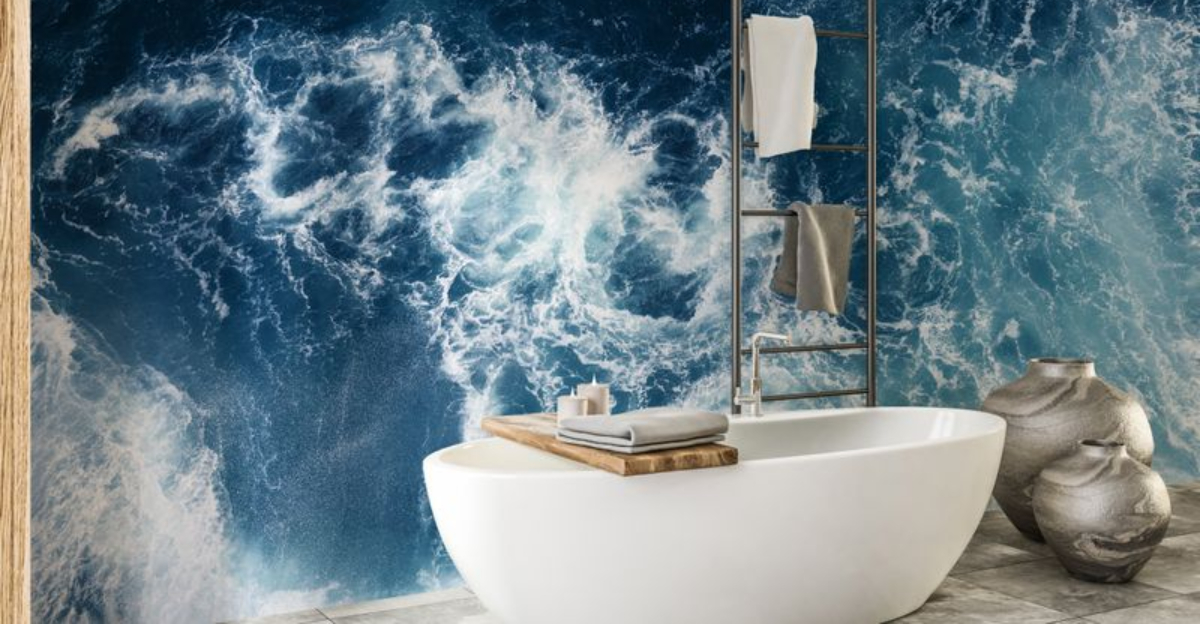Renovating my bathroom seemed like an exciting project until I realized some trendy choices didn’t stand the test of time. Looking back, I wish I’d consulted experts before jumping on Instagram-worthy bandwagons that quickly became outdated or impractical.
Learn from my costly mistakes and discover what design professionals recommend for bathrooms that remain beautiful and functional for years.
1. Overly ornate fixtures
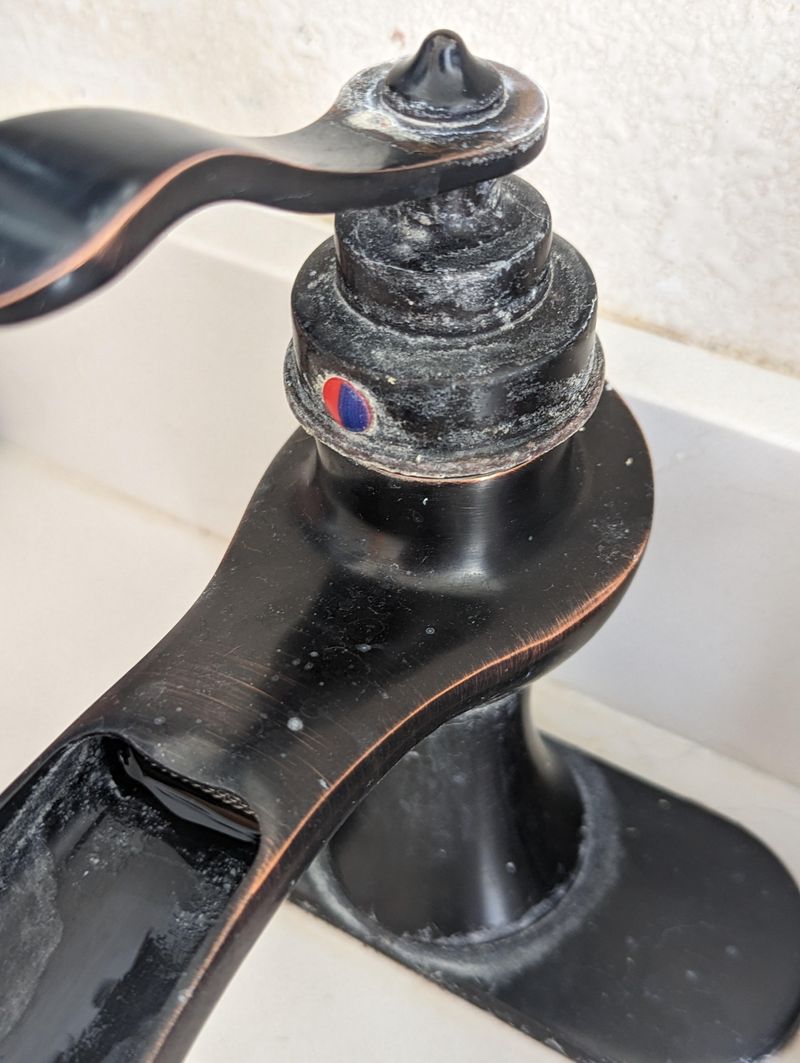
Whimsical dolphin-shaped faucets and elaborate Victorian handles seemed charming at first glance. My wallet and I quickly regretted the decision when cleaning became a nightmare!
Intricate designs collect dust, soap scum, and limescale in every tiny crevice. According to designers, simple, clean-lined fixtures in classic finishes offer timeless appeal without the maintenance headaches.
2. Excessive use of subway tile
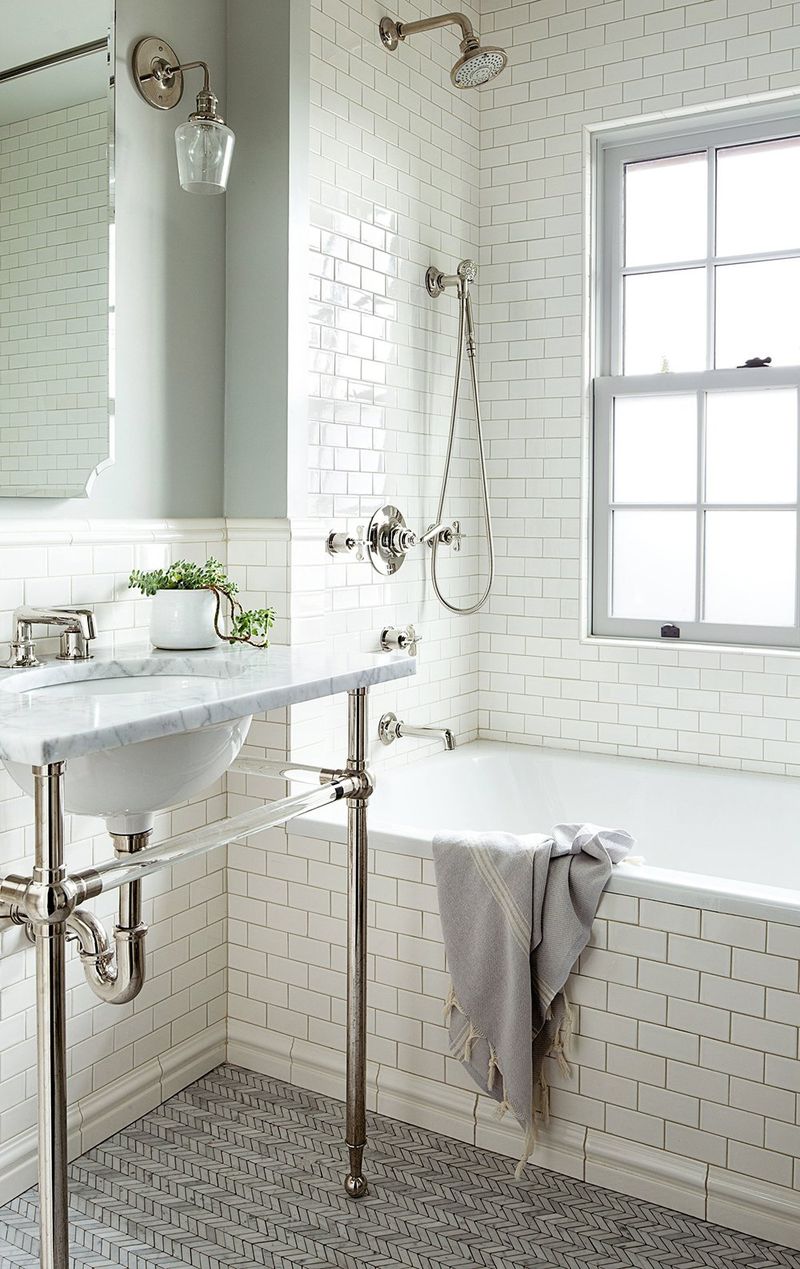
Splashing subway tiles across every available surface seemed foolproof based on Pinterest boards. Soon enough, my bathroom resembled a sterile train station rather than a relaxing sanctuary.
Design experts suggest limiting subway tile to one focal area. Mixing complementary materials creates visual interest and prevents the clinical feel that comes with wall-to-wall uniformity.
3. Trendy colored grout
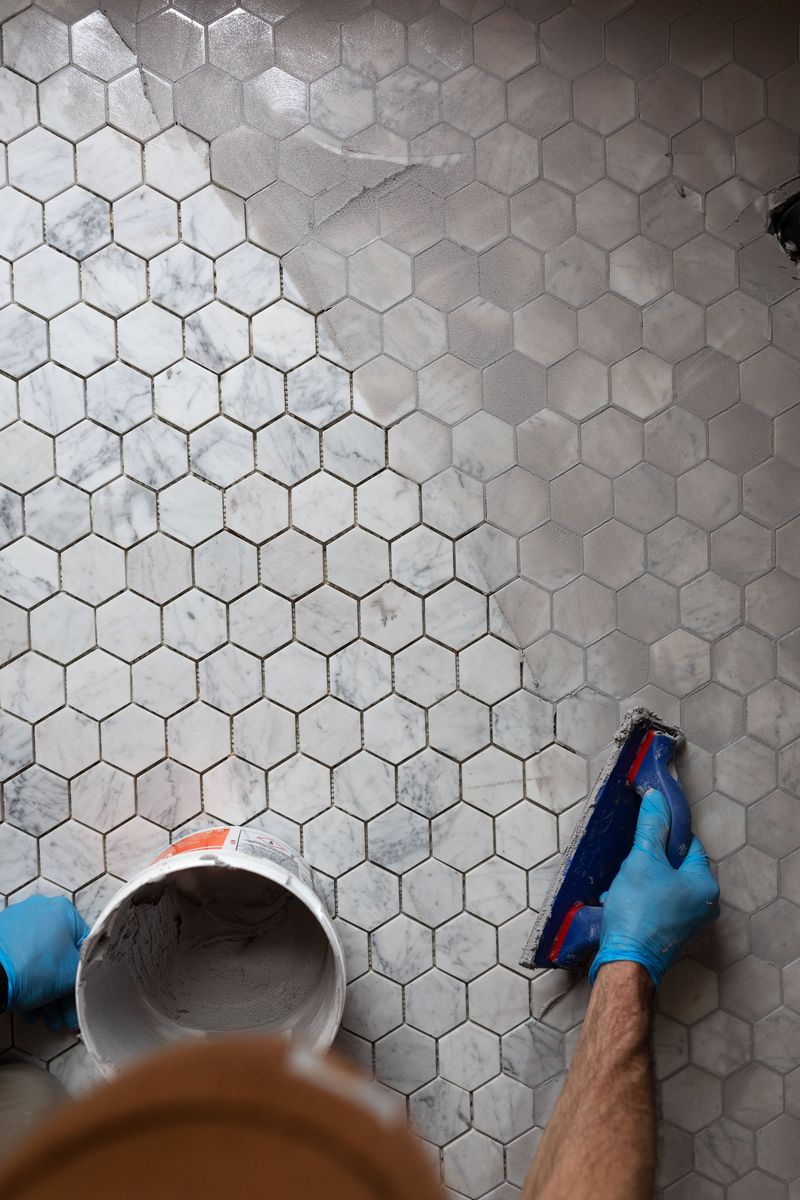
Vibrant blue grout against white tiles seemed revolutionary – until it wasn’t. Six months later, the once-electric hue faded unevenly into a patchy, dingy mess impossible to restore.
Master tilers recommend sticking with neutral grout colors (light gray, beige, or classic white). For longevity, quality epoxy grouts resist staining and maintain color integrity far better than standard varieties.
4. Too much open shelving
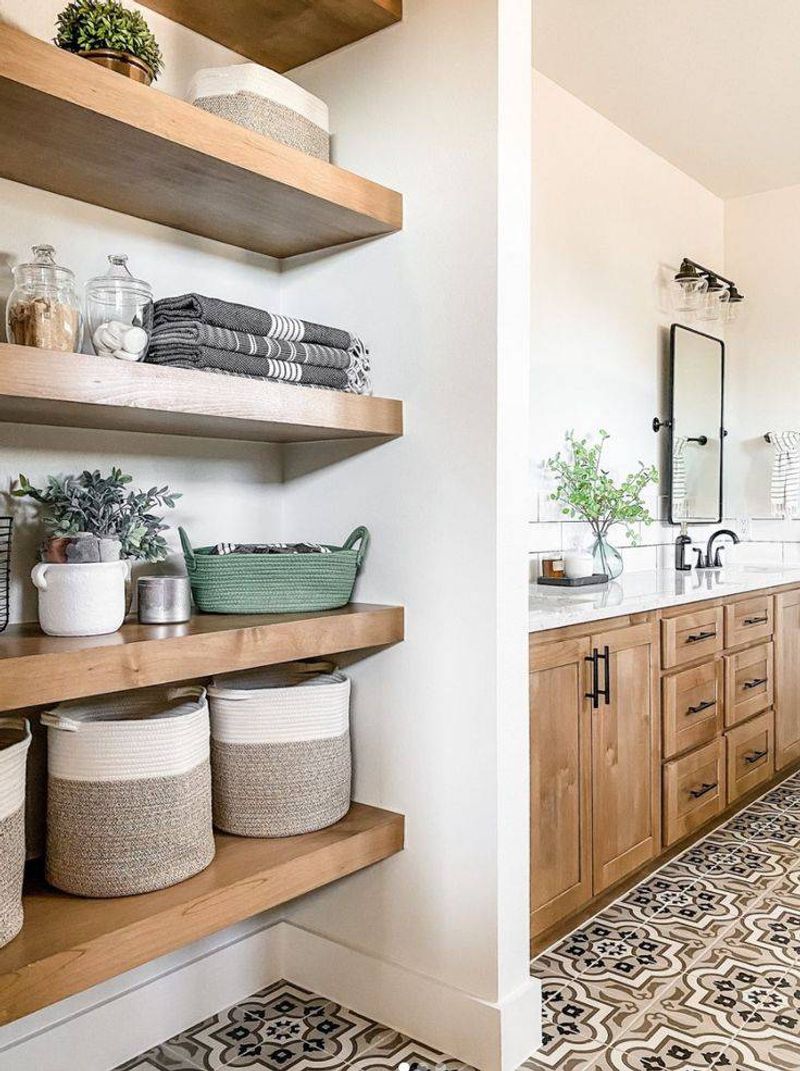
Minimalist floating shelves appeared so elegant in design magazines! Reality struck when every toiletry, towel, and personal item remained constantly visible, creating perpetual visual clutter.
Bathroom designers advocate for a balanced approach: incorporate some closed storage for necessities while using limited open shelving for decorative items. Nobody needs to see your collection of half-empty shampoo bottles!
5. Floating vanities without storage
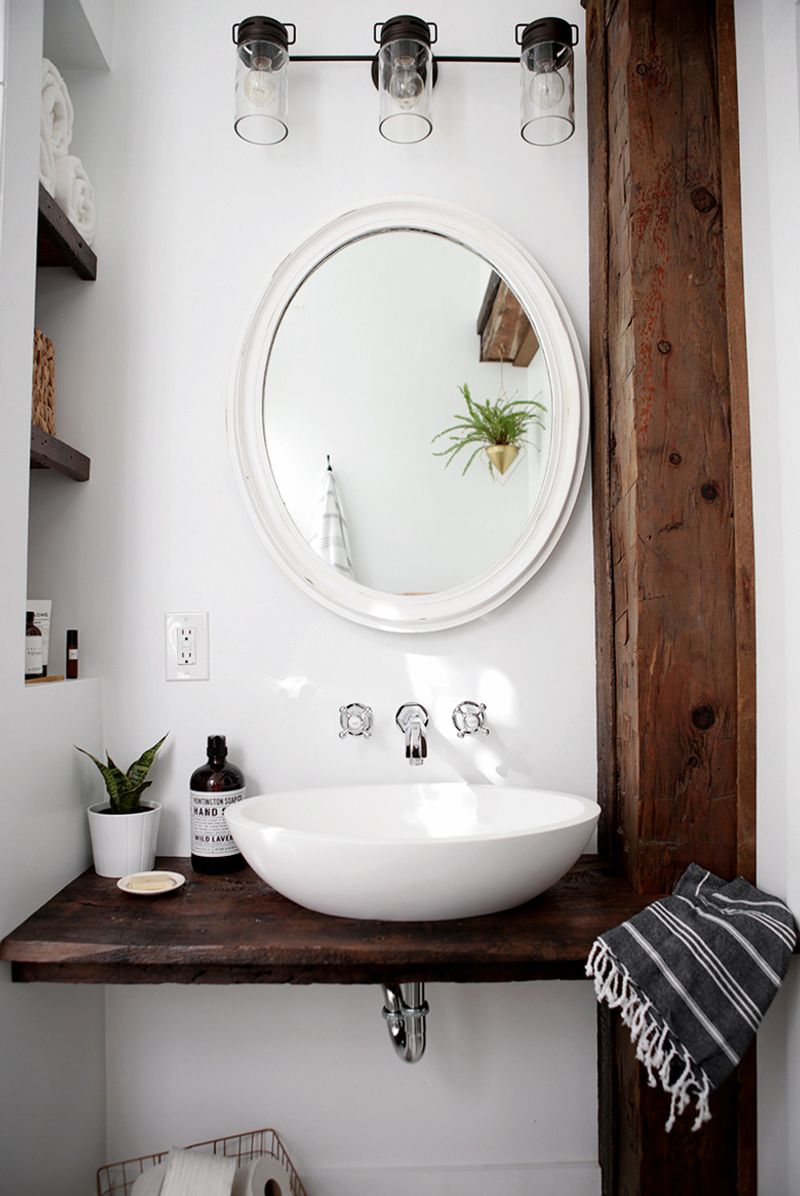
Seduced by sleek aesthetics, I installed a wall-mounted sink with zero storage. Morning routines became chaotic treasure hunts for essentials stashed elsewhere in the house!
Practical bathroom specialists emphasize function over form. Look for floating designs that incorporate at least some drawers or cabinets. Alternatively, pair minimalist vanities with separate storage solutions to maintain both style and sanity.
6. Over-scaled mirrors
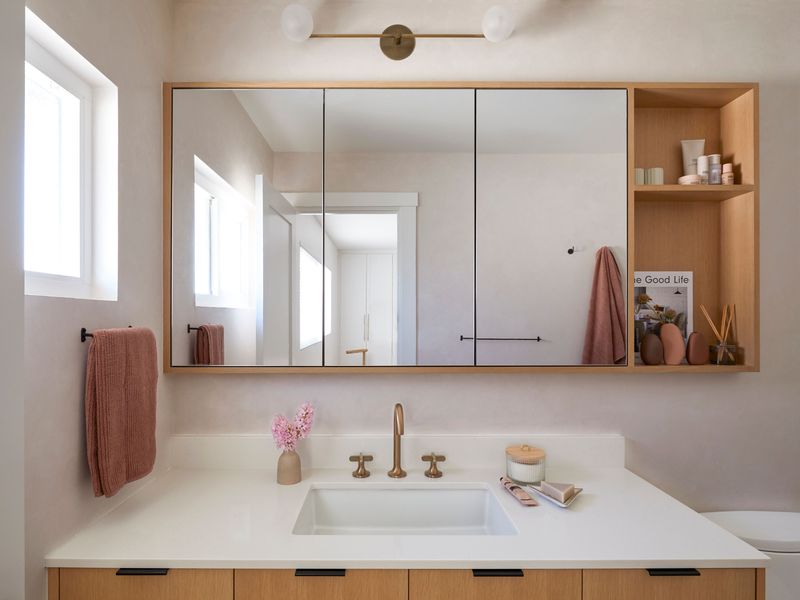
Wall-to-wall mirror installations seemed glamorous and space-enhancing. Fast forward to daily cleaning battles against water spots, toothpaste splatters, and fingerprints across an enormous reflective surface!
Moderation works better, according to interior designers. Choose appropriately sized mirrors with frames or borders that complement your aesthetic. Properly scaled mirrors create balance while significantly reducing maintenance demands.
7. Patterned wallpaper in humid areas
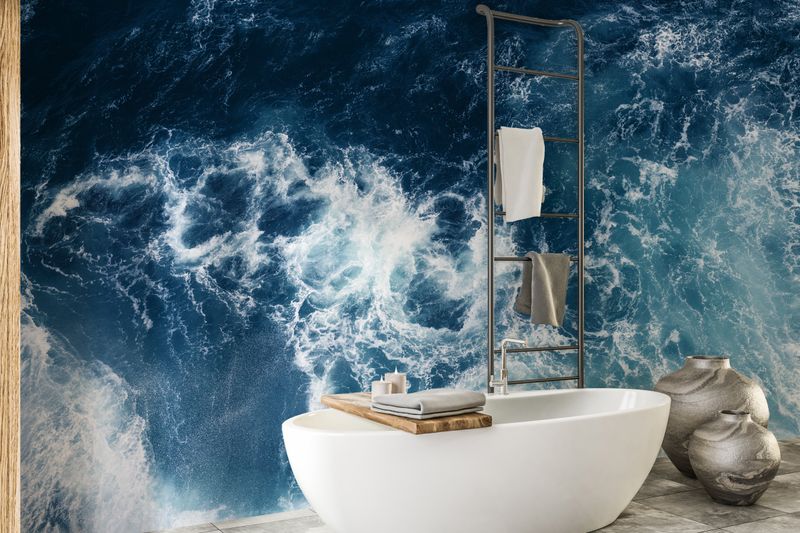
Jungle-themed wallpaper transformed my shower area into a tropical paradise – briefly. Moisture quickly caused peeling corners, mold spots, and faded sections that ruined the entire effect.
Moisture-resistance experts recommend limiting wallpaper to well-ventilated bathroom zones away from direct water exposure. Shower-adjacent walls benefit from specialized tile, glass, or water-resistant panels that provide lasting beauty without deterioration concerns.
8. Bright neon lighting
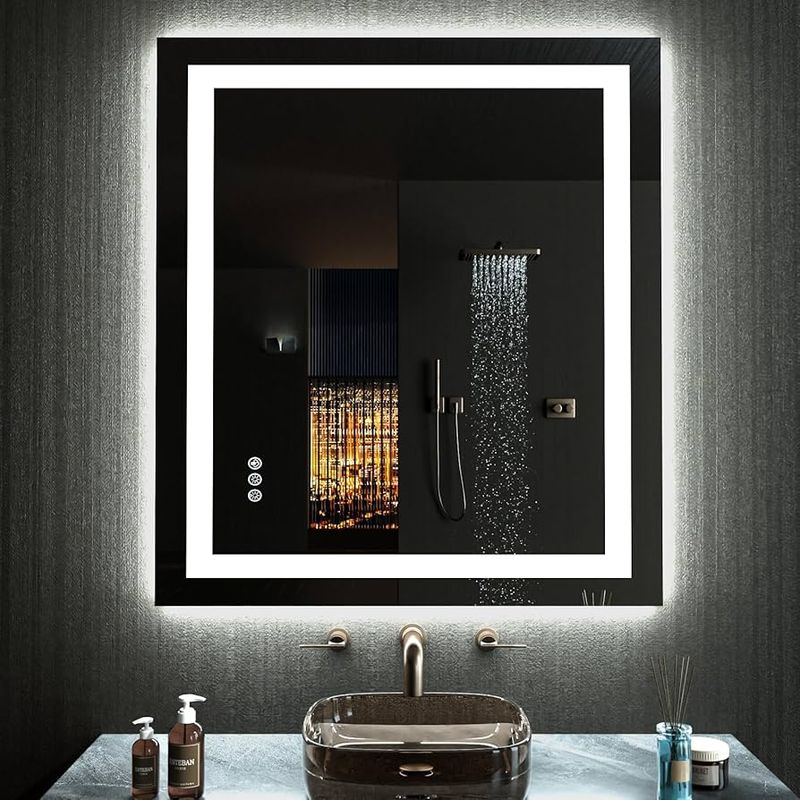
Futuristic LED strips in electric blue seemed revolutionary until everyday use revealed harsh shadows and unflattering reflections. Morning routines became depressing under the carnival-like glow!
Lighting designers advocate for layered, warm lighting around 2700-3000K. Combining ambient ceiling fixtures, sconces at eye level, and task lighting near mirrors creates a flattering environment that enhances rather than distorts.
9. Frameless glass with poor hardware
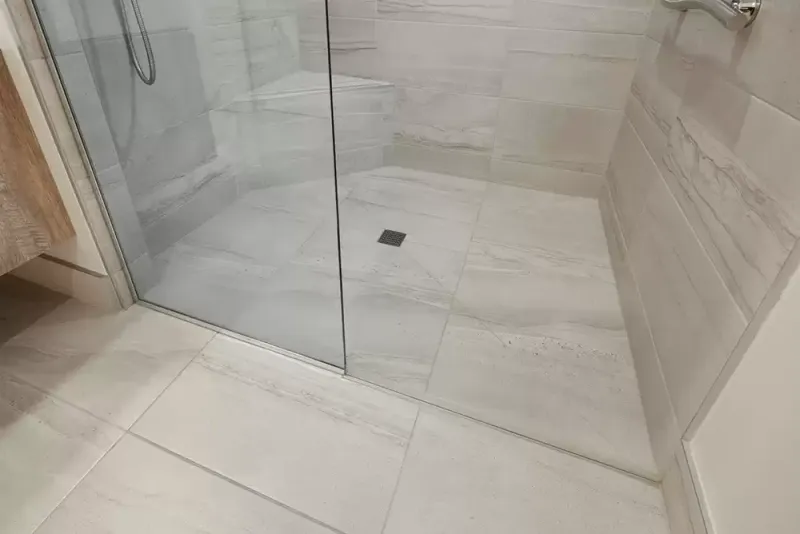
Crystal-clear shower enclosures seemed effortlessly elegant until budget constraints led to skimping on hardware. Flimsy hinges, misaligned doors, and leaking corners quickly transformed luxury into liability.
Glass specialists insist quality hardware makes or breaks frameless designs. Investing in solid brass hinges, proper sealing systems, and professional installation prevents frustrating issues while ensuring your glass elements remain truly luxurious.
10. Tiny, impractical sinks
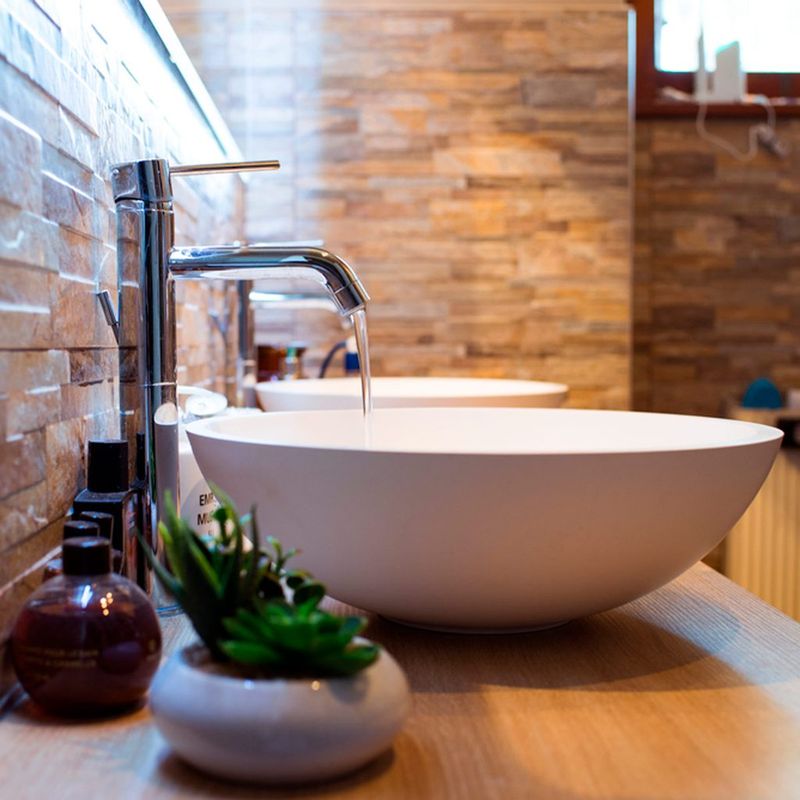
Vessel sinks resembling delicate art pieces captivated my imagination. Daily reality involved water splashing everywhere, awkward hand-washing, and constant cleaning around the raised basin.
Plumbing experts recommend prioritizing function when selecting sinks. Undermount or integrated models with adequate depth and width accommodate practical needs. Save artistic expression for accessories that don’t compromise essential bathroom activities.
11. Overuse of quartz countertops
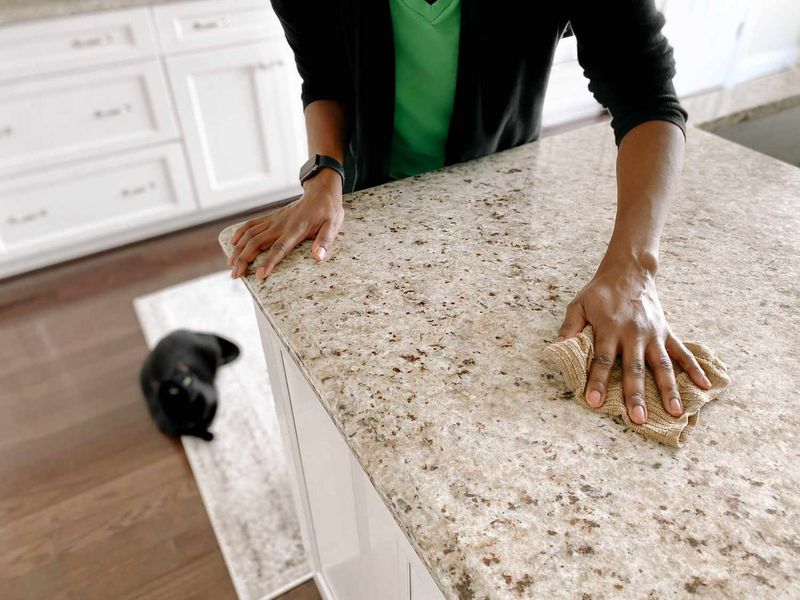
Jumping on the engineered stone bandwagon, I installed brilliant white quartz everywhere possible. Surprise came when harsh cleaning chemicals caused discoloration and compromised the resin binding.
Material experts suggest considering natural stone alternatives like granite for wet areas. If choosing quartz, select moderate patterns that disguise water spots and use only manufacturer-approved cleaners to maintain integrity and appearance.
12. Mismatched metals
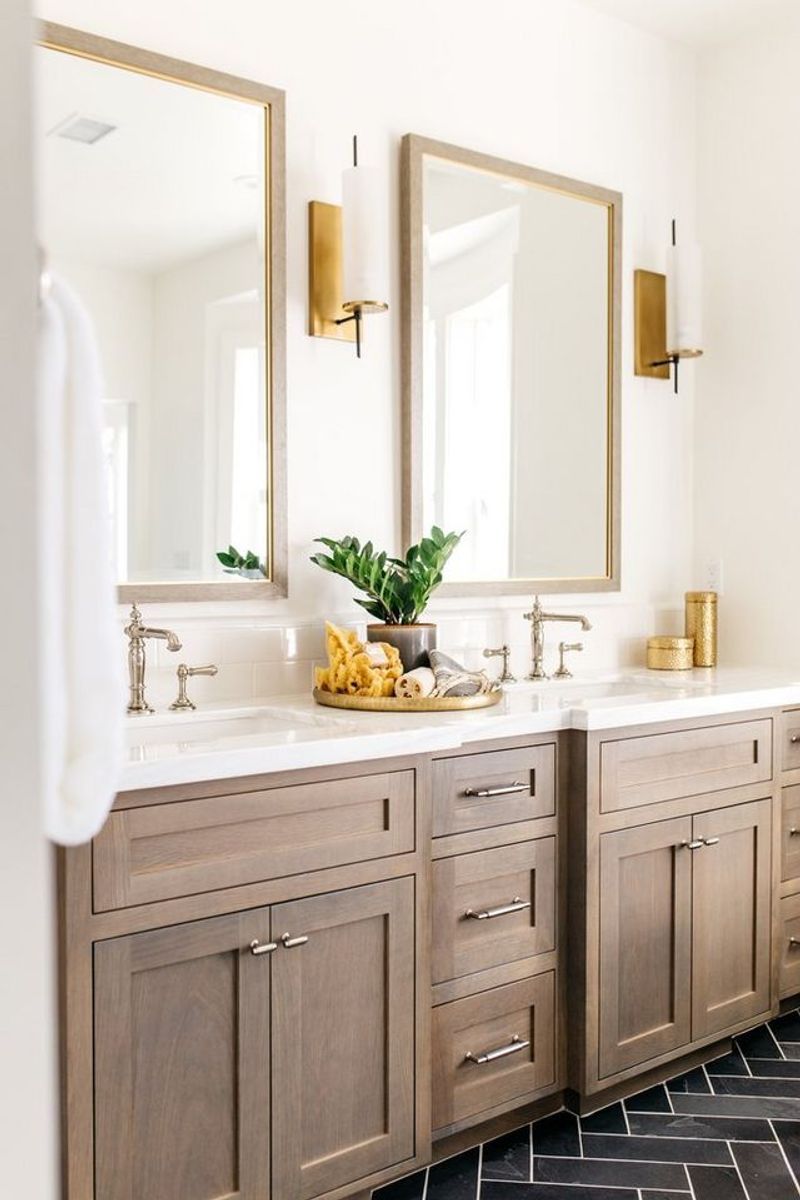
Following eclectic design trends, I combined copper faucets, chrome towel bars, and brushed nickel light fixtures. Rather than appearing artfully curated, my bathroom looked like a clearance bin of disconnected elements!
Design professionals recommend limiting metal finishes to two complementary options. Creating intentional harmony through repeated finishes establishes cohesion while still allowing for visual interest.
13. All-white everything without texture
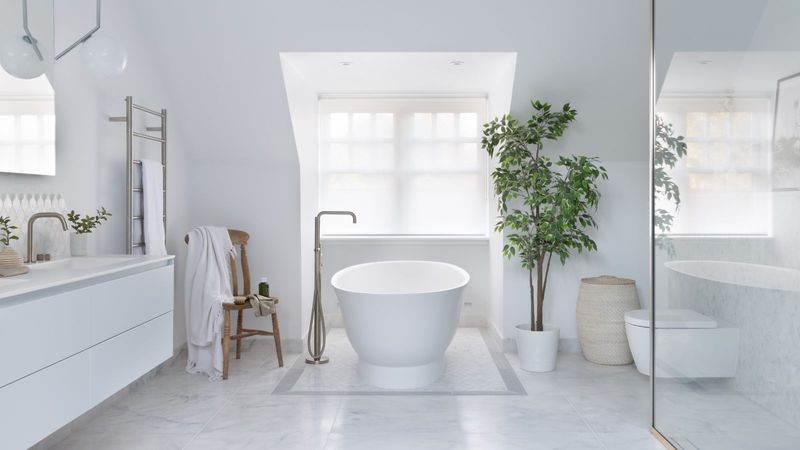
Pristine white walls, floors, fixtures, and accessories promised a spa-like retreat. Instead, my bathroom felt clinical and sterile – more operating room than relaxation space!
Interior stylists recommend incorporating natural textures even within monochromatic schemes. Woven baskets, wooden elements, textured tiles, or fabric accents create warmth and dimension that prevent the cold, institutional feeling of flat white surfaces.
14. Clunky, oversized towel racks
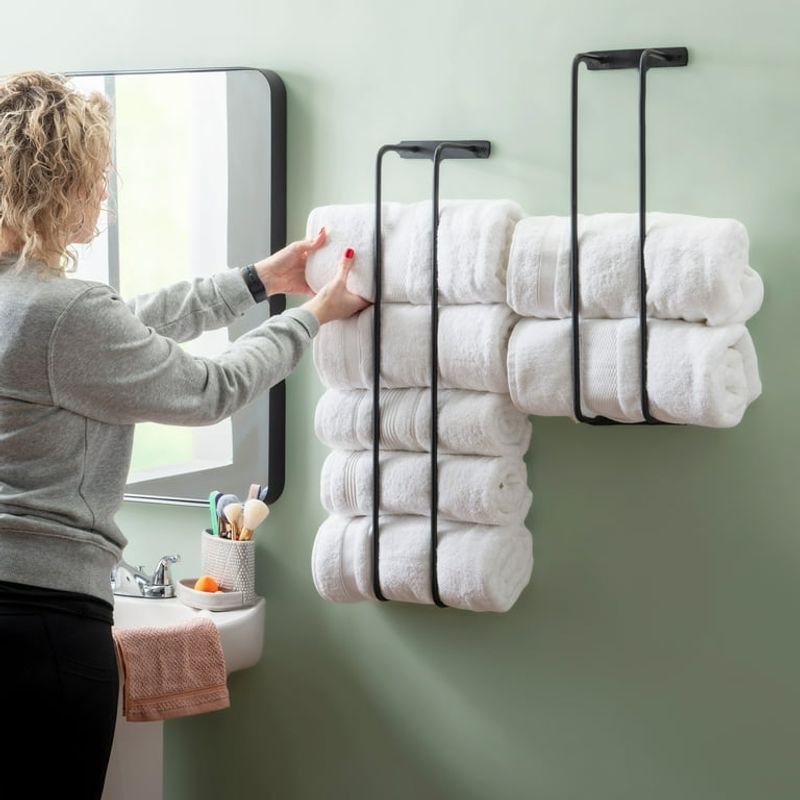
Massive hotel-style towel racks seemed luxurious until they dominated the limited wall space. Moving around the bathroom meant dodging protruding metal bars that became hazards rather than conveniences!
Space planning experts suggest sleek, wall-mounted options or over-door hooks that maximize functionality without sacrificing precious square footage. Heated towel racks offer luxury in more compact, thoughtful designs.
15. Overly complex tile patterns
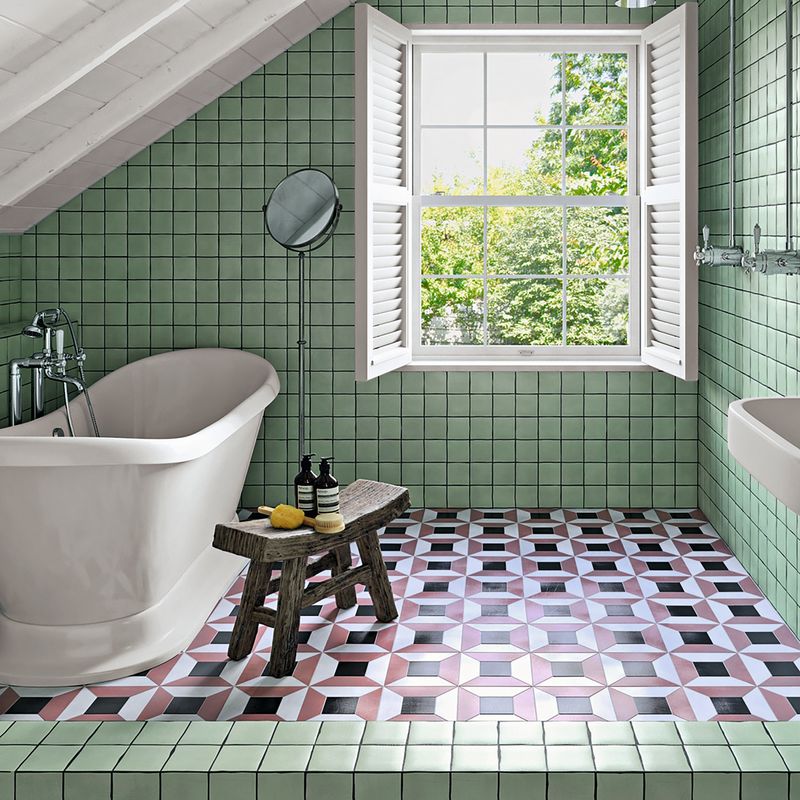
Moroccan-inspired tile arrangements looked spectacular on installation day. Years later, busy patterns that once seemed timeless now scream “2018 trend” while making the small space feel chaotic and dated.
Tile professionals suggest using elaborate patterns sparingly as accents rather than full-room applications. Classic subway, hexagon, or large-format tiles in neutral colors create enduring backdrops that can evolve with changing accessories.
16. Ignoring ventilation needs
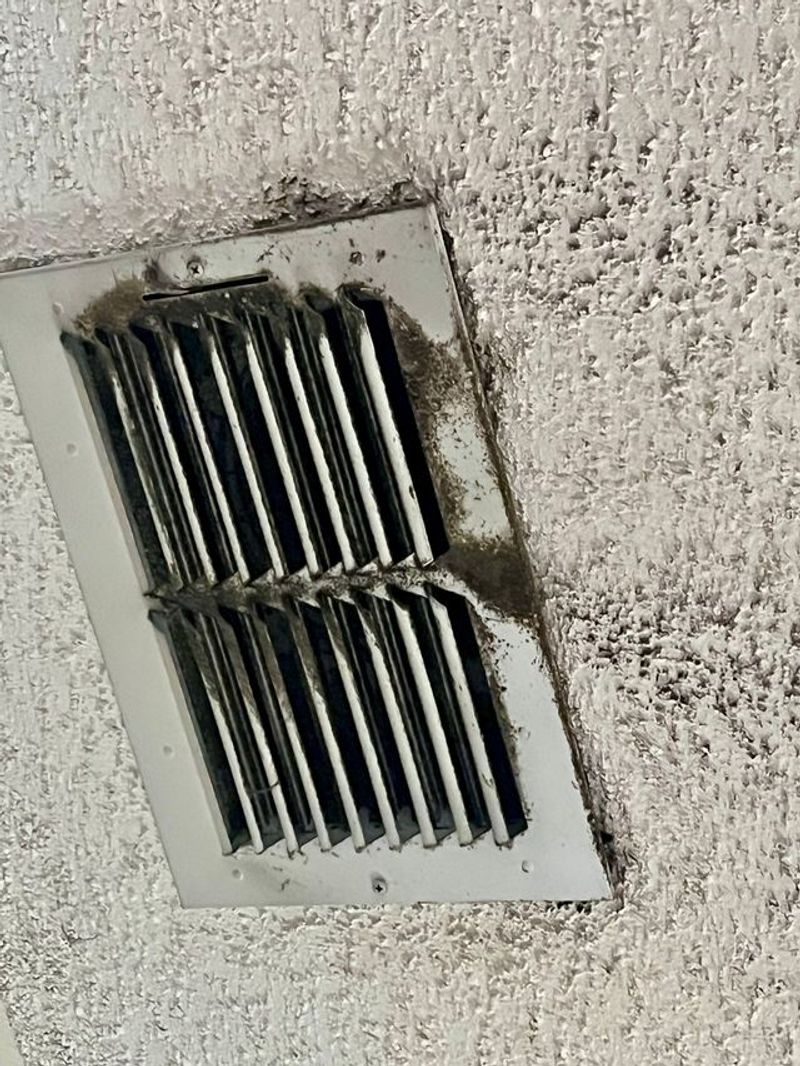
Prioritizing aesthetics, I skipped adequate ventilation in favor of preserving ceiling space. Big mistake! Persistent humidity led to peeling paint, mold growth, and deteriorating cabinetry within months.
Building experts insist proper ventilation remains non-negotiable. Modern exhaust fans come in sleek, quiet designs that protect your investment from moisture damage while maintaining style. No bathroom renovation should compromise this essential function.

